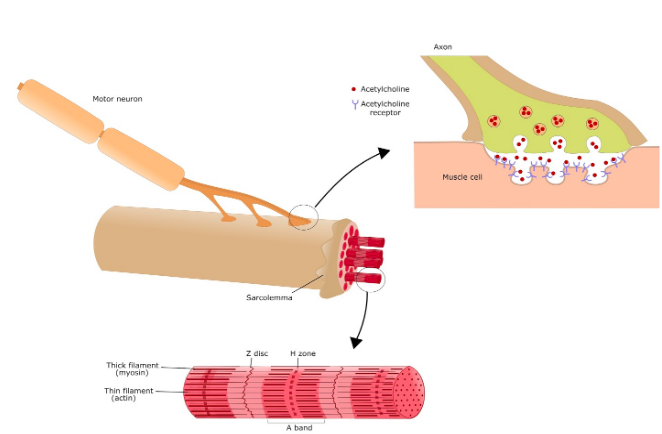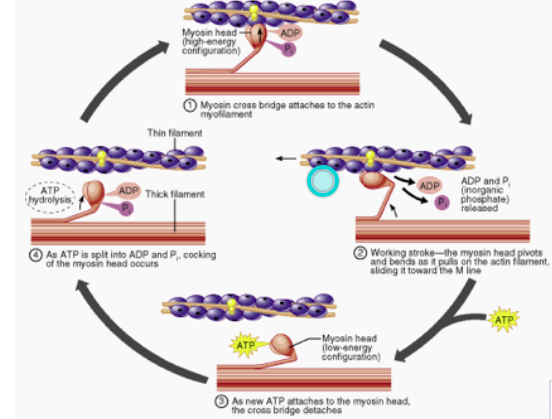Mechanism of Muscle Contraction MCQ - Practice Questions with Answers
Edited By admin | Updated on Sep 18, 2023 18:34 AM | #NEET
Quick Facts
-
24 Questions around this concept.
Solve by difficulty
Which one of the following pairs of chemical substances, is correctly categorised?
During muscular contraction, which of the following events occur?
1) H-zone disappears
2) A-band widens
3) I-bands reduce in width
4) The width of the A-band is unaffected
5) M-line and Z-line come closer
Athletes often experience muscle cramps. Which of the following statements is true muscle cramps?
Concepts Covered - 1
Mechanism of Muscle Contraction
- Mechanism of muscle contraction is best explained by the sliding filament theory which states that contraction of a muscle fibre takes place by the sliding of the thin filaments over the thick filaments.
- Muscle contraction is initiated by a signal sent by the central nervous system (CNS) via a motor neuron.
- A motor neuron along with the muscle fibres connected to it constitute a motor unit.
- The junction between a motor neuron and the sarcolemma of the muscle fibre is called the neuromuscular junction or motor-end plate.
- A neural signal reaching this junction releases a neurotransmitter (Acetylcholine) which generates an action potential in the sarcolemma.
- This spreads through the muscle fibre and causes the release of calcium ions into the sarcoplasm.
- Increase in Ca++ level leads to the binding of calcium with a subunit of troponin (TpC) on actin filaments and thereby remove the masking of active sites for myosin.
- Utilising the energy from ATP hydrolysis, the myosin head now binds to the exposed active sites on actin to form a cross bridge.
- This pulls the attached actin filaments towards the centre of ‘A’ band.
- The ‘Z’ line attached to the actins are also pulled inwards thereby causing a shortening of the sarcomere, i.e., contraction.
- It is clear from the above steps, that during shortening of the muscle, i.e., contraction, the ‘I’ bands get reduced, whereas the ‘A’ bands retain the length.
- The myosin, releasing the ADP and Pi goes back to its relaxed state.
- A new ATP binds and the cross-bridge is broken.
- The ATP is hydrolysed by the myosin head and the cycle of cross-bridge formation and breakage is repeated causing further sliding.
- The process continues till the Ca++ ions are pumped back to the sarcoplasmic cisternae resulting in the masking of actin filaments.
- This causes the return of ‘Z’ lines back to their original position, i.e., relaxation.
- Since ATP is essential for muscular contraction, ADP produced needs to be converted back to ATP immediately. This is achieved in the muscles by the presence of another high energy compound called creatine phosphate.
- ADP combines with creatine phosphate to produce ATP and creatinine.


Study it with Videos
"Stay in the loop. Receive exam news, study resources, and expert advice!"

